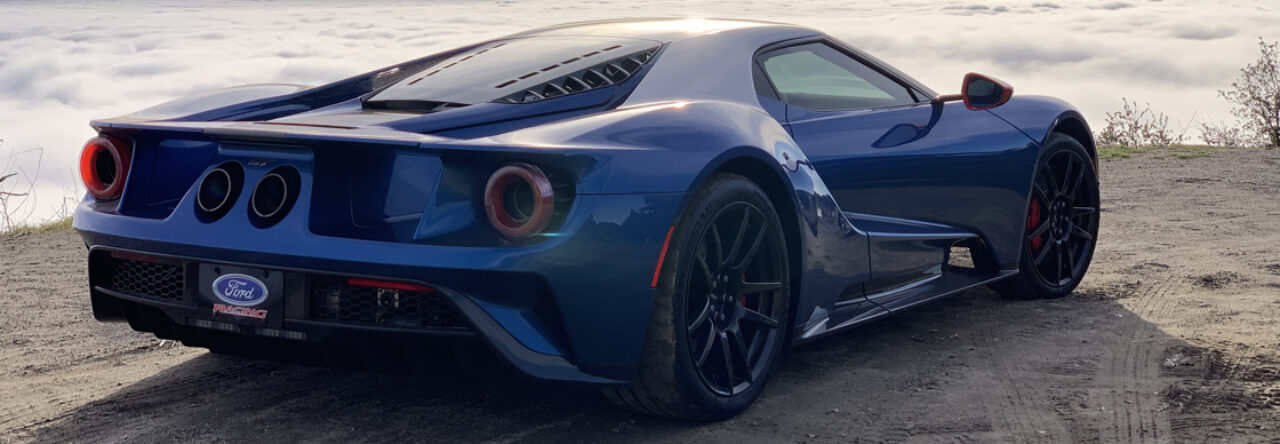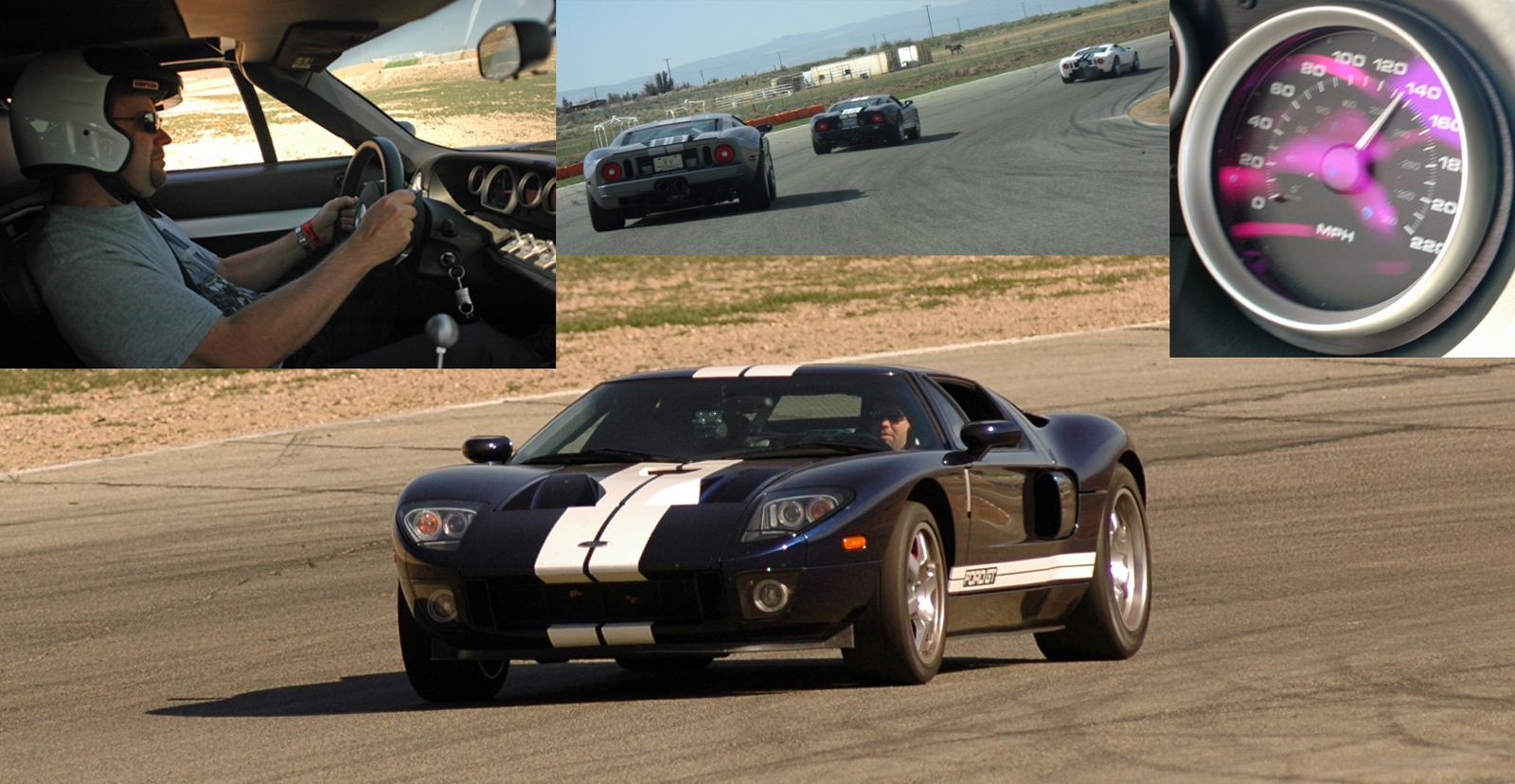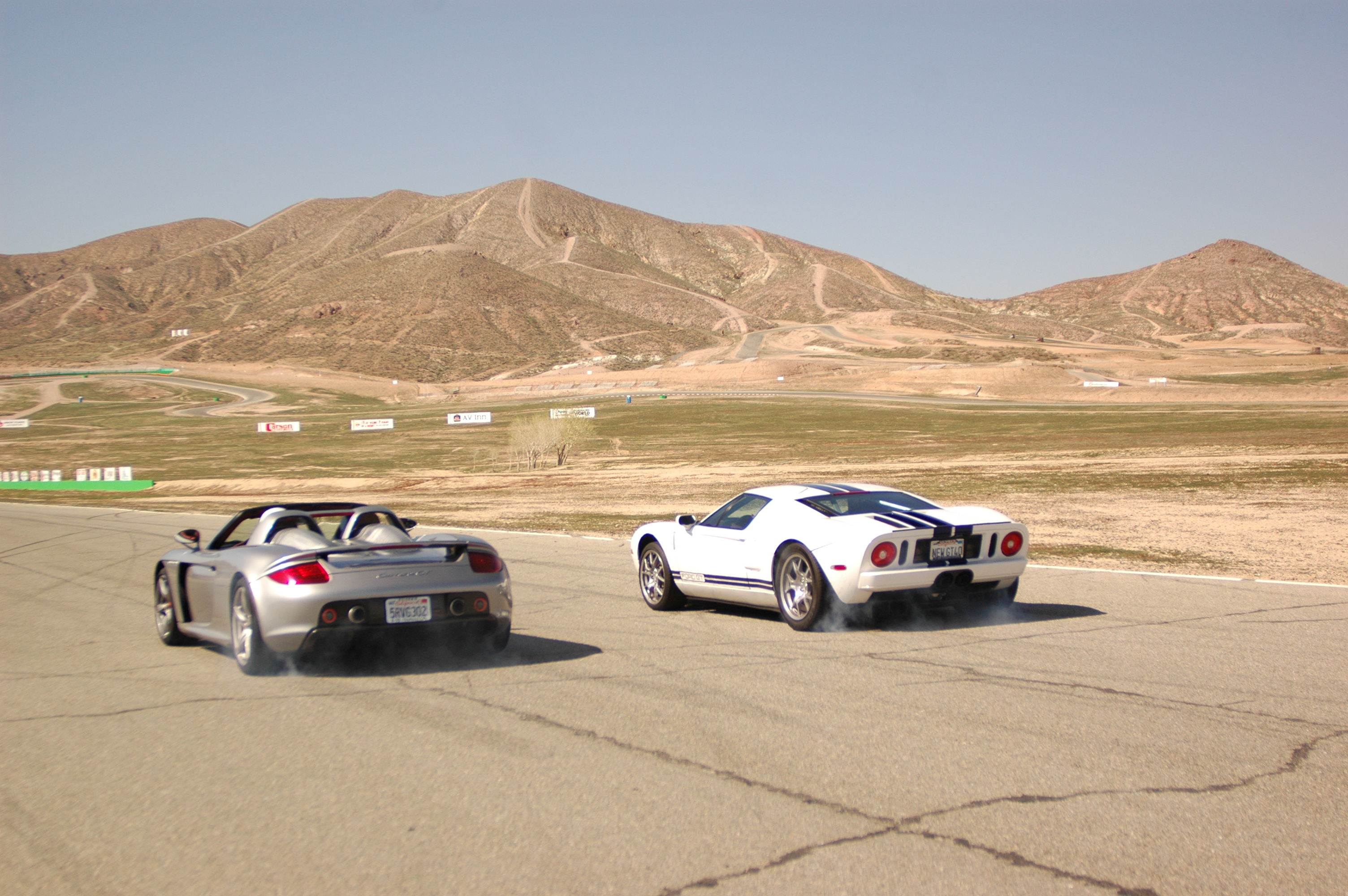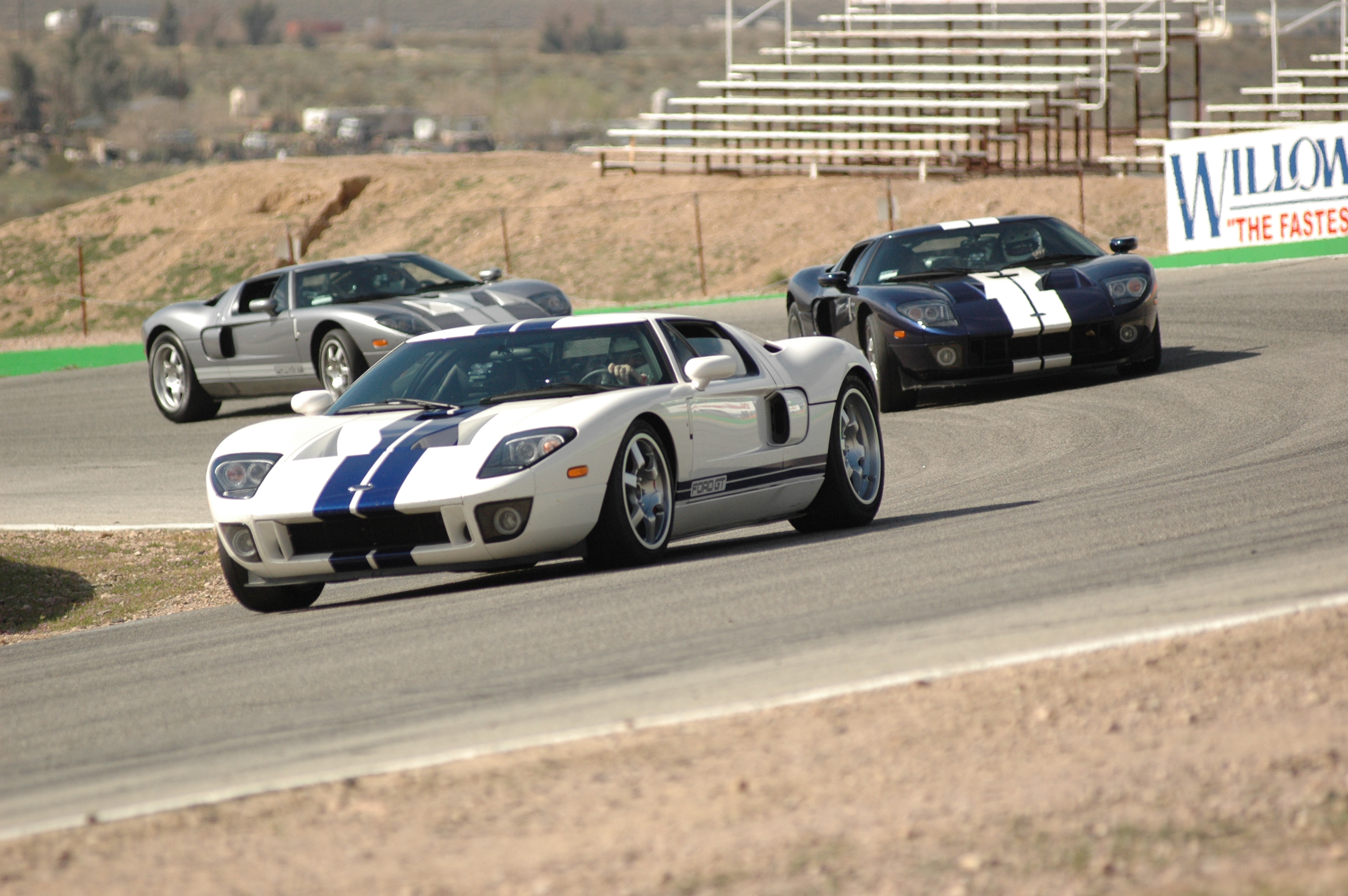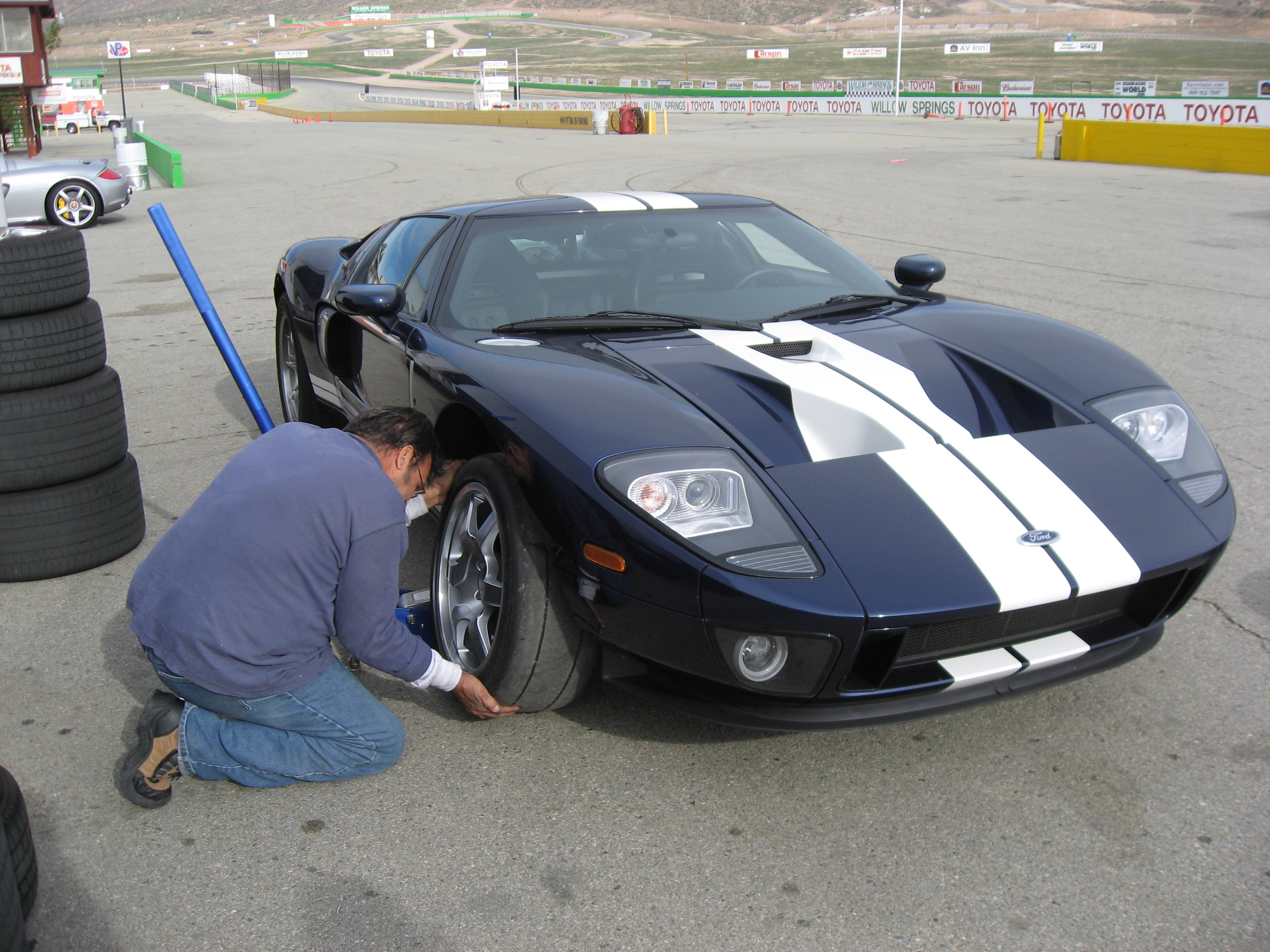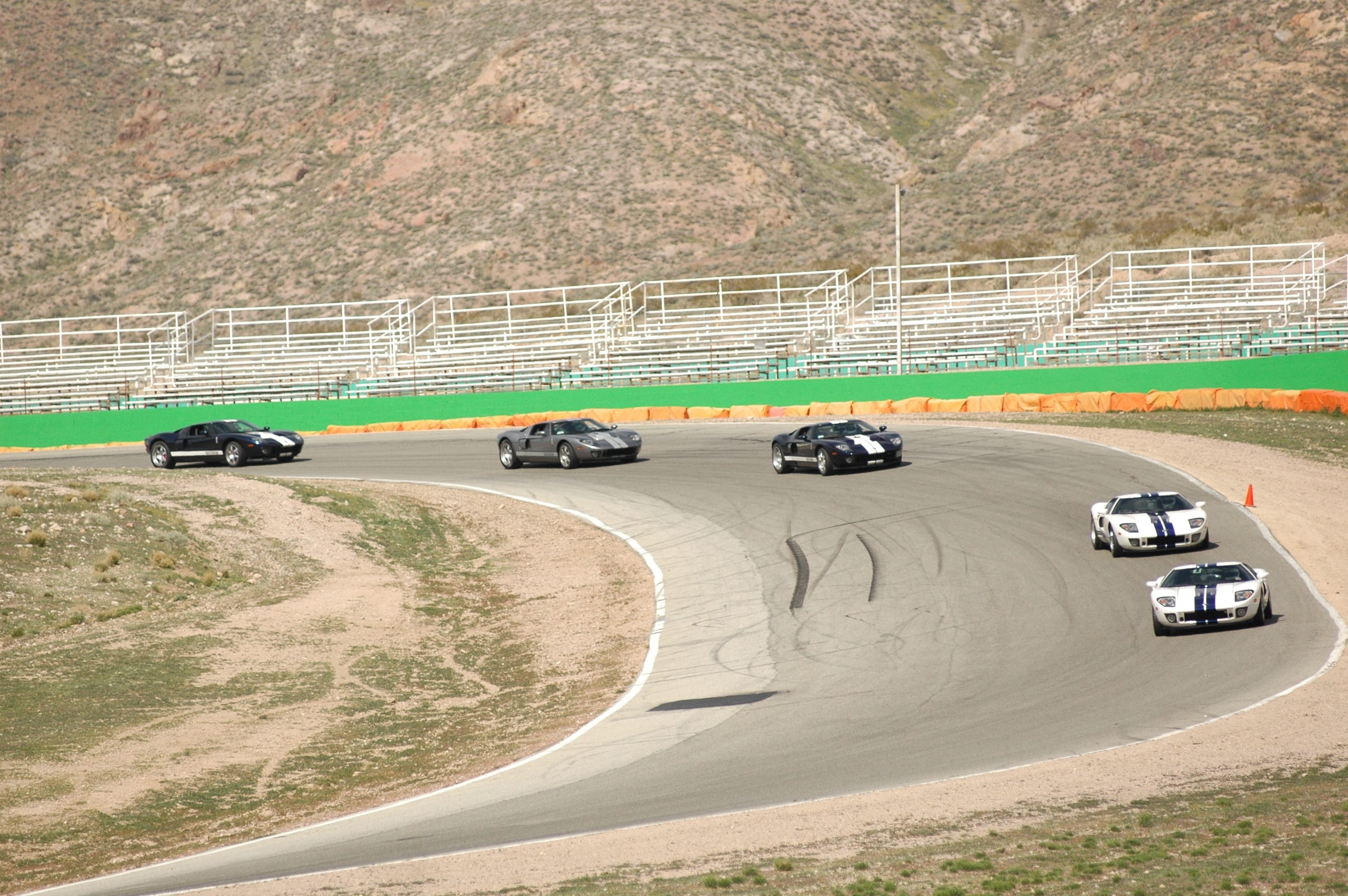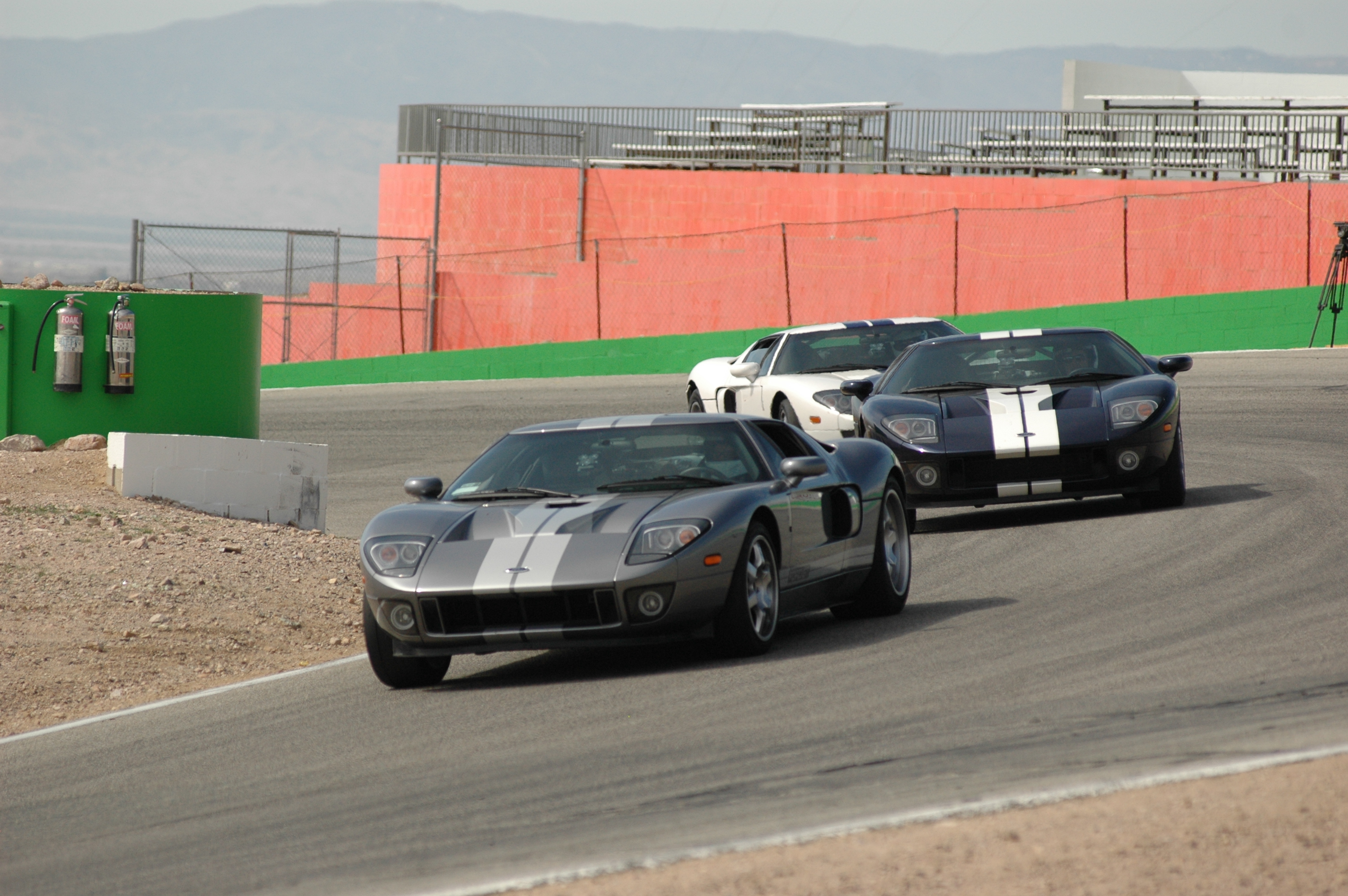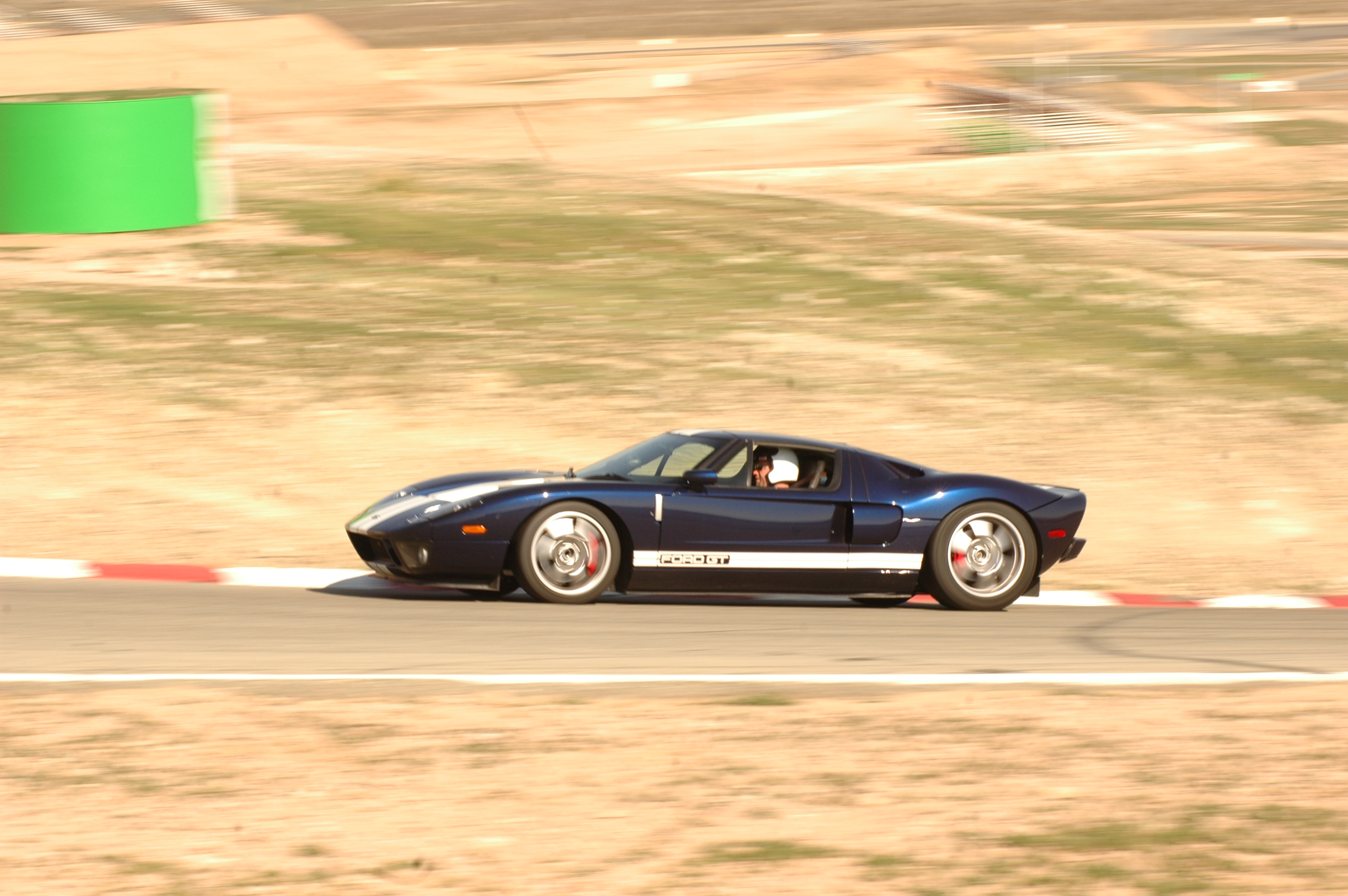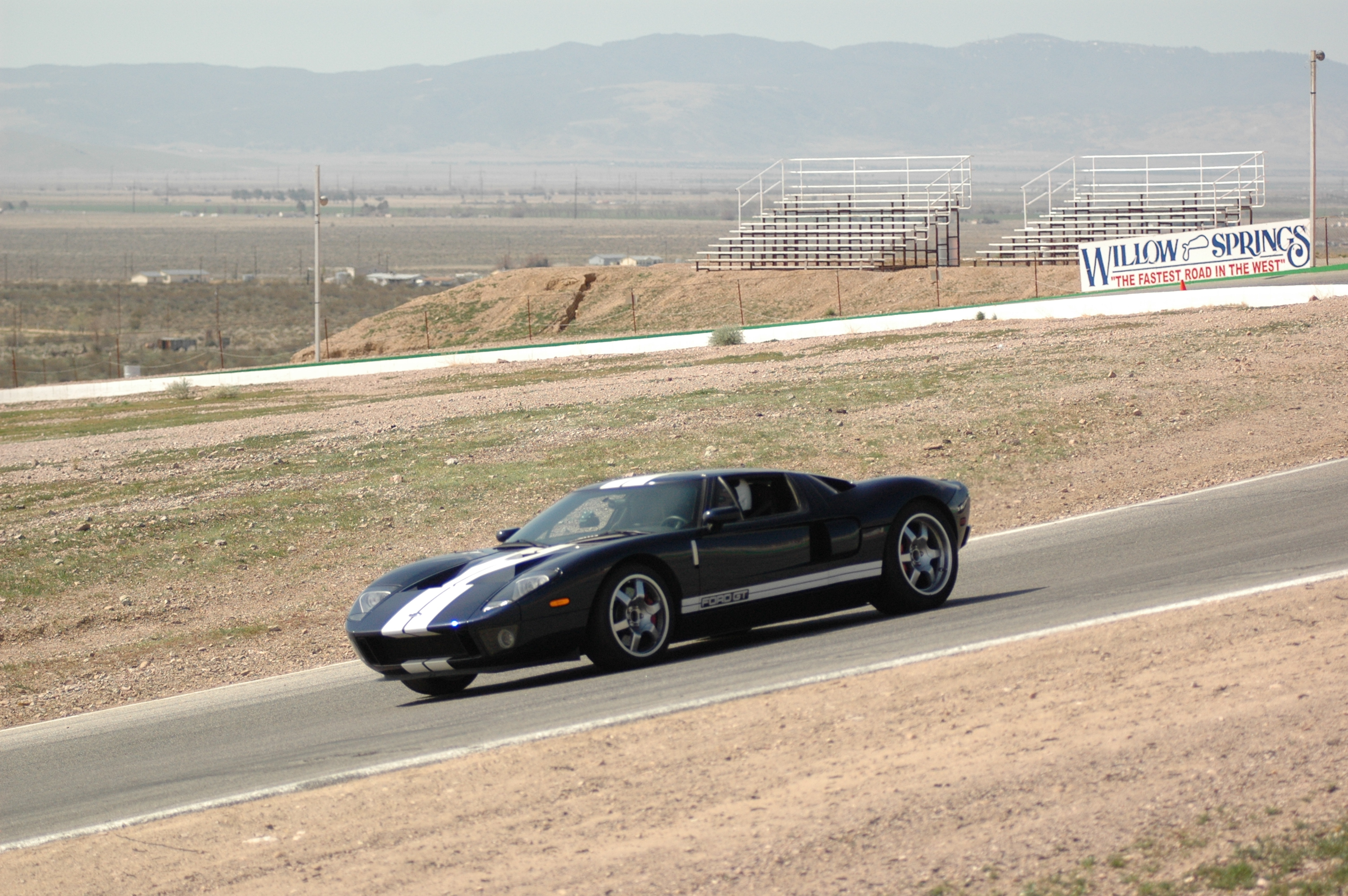In March of 2008 I participated in a specific racing school meant for Ford GTs. It was taught by Neil Hannemann, the Ford GT’s chief engineer, at Willow Springs Raceway. If you’ve got a car with a lot of horsepower this track will allow for some pretty high speeds. The Ford GT was capable hitting 140 mph on the back stretch…if I was willing to push it that hard. Here’s the story that ran in March of 2008.
“Hello, Auto Claims division? Yes, there was this event called ‘The GT School’ that involved driving my 700-horsepower Ford GT at speeds up to 140 mph at Willow Springs International Raceway. But Turn 9 is a little tricky. It’s this decreasing radius corner….”
This conversation never actually took place, but I heard it inside my head about 50 times during my nine hours at The GT School. In truth, my insurance company would have simply laughed and hung up had I called to make a claim about wadding up my $150,000 Ford supercar on a racetrack. Most insurance companies have a specific disclaimer, usually deeply buried in the policy, that shields them from coverage for “competitive driving events” or “racing activities” or similar behavior.
So why risk the shiny — and utterly, achingly uninsured — Midnight Blue paint of my Ford GT by flinging it around a racetrack that is not just one of Southern California’s fastest but also notorious for high-speed crashes?
Learn to Race Your Ford GT at the Ford GT School
First, this driving school for the Ford GT is a good idea because it’s taught by the Ford GT’s chief engineer, Neil Hannemann. Hannemann started out road racing the old Shelby GLH, a hooligan Omni hatchback with too much power, but then moved on to become instrumental in the creation of the first Dodge Viper, the key development engineer for the Saleen S7 and ultimately the chief of development for the Ford GT. Until recently, Hannemann had been working on a mid-engine car for McLaren Cars, which was meant to be the Mercedes-Benz SLR that McLaren had really wanted to do in the first place.
Second, the Ford GT school sounded like a good idea because the curriculum promised lots of track time. Unless you’re still learning basic driving techniques, the only way to get faster is to get on a racetrack and simply drive, drive, drive.
And then there’s the thrill of exercising the GT in its natural habitat. As surprisingly comfortable and functional as this car is on public roads, street driving is a bit like using a sledgehammer to open a pudding pack — the job gets done but a lot of good stuff goes to waste. The Ford GT School’s $2,000 entry fee ain’t exactly chump change, yet for eight hours’ worth of access to Willow Springs International Raceway and the Ford GT’s chief engineer, it seemed like a fair deal to me.
All This and Tires, Too
To maximize the value of the Ford GT’s track time The GT School provides (for an additional fee of $3,000) a set of Hoosier DOT-legal semi-slick tires in a sticky compound designed for racing, in the same size as the GT’s factory-installed Goodyear F1 tires.
The Hoosiers are mounted on the standard six-spoke Ford GT wheels, not the optional alloy wheels that most GTs came off the production line with. Although the optional wheels are lighter, the Hoosier tires weigh considerably less than the factory Goodyear F1 meats, largely offsetting the increased weight of the cast wheels.
Obviously I got to keep the wheels and tires at the end of the day, and the Hoosiers are supposed to be good for at least 300 track miles. So I splurged for the pricey wheel/tire setup, figuring I’d find some future opportunity to use them. If nothing else, I can mount them for a cruise night or car show just to watch the reactions from onlookers.
The Race Track Line in a Ford GT
With the super-sticky Hoosiers mounted at each corner of my car and a Racelogic timing device stuck to the inside of the windshield with a suction cup, I started the day at the track with some basic lead-and-follow laps just to learn the proper racing line through Willow Springs’ nine turns.
Sitting at the back of the pack and watching a parade of five Ford GTs circulating at an ever-increasing rate of speed made for yet another benefit of attending the school. Initially my top speed was about 90 mph on the two long straightaways, with commensurately slower speeds in the corners. Eventually I was topping 120 mph on the front straight while charging into Turn 8 off the back straight at 110 mph.
After a break for lunch and the expected exaggerations and outright lies about driving skill that inevitably ensue when drivers of fast cars gather together, we all got back behind the wheel for still more laps, but no more lead and follow. Now we each could go as fast as we wanted, with Neil Hannemann rotating between cars and providing personalized guidance. At this point my lap times were in the range of 1 minute, 40 seconds, but within an hour I’d dropped them another second thanks to charging into Turn 8 at 115 mph and hitting just over 140 mph on the front straight.
Hannemann offered some driving tips and assured me that 130 mph through Turn 8 was no problem. Easy for him to say. It felt like I was trapped in a Looney Tunes cartoon, with Hannemann on one shoulder, shouting “Faster, Faster,” while on the other shoulder my insurance agent was wagging his finger and saying, “You’re not covered.” Ultimately I managed 120 mph through Turn 8 and achieved a best lap time of 1:37.0.
The Ford GT Loves the Track
It’s worth mentioning the Ford GT felt positively bored with the entire affair. The brakes remained consistent and fade-free throughout the day. The temperature gauge never went above 210 degrees Fahrenheit. The back end of the car never came close to stepping out (which, in retrospect, seems just wrong after 50-plus laps on a racetrack). The GT is remarkably controllable and progressive at the limit, and that’s before you mount a set of racing-spec tires on it that are known for progressive breakaway. I simply wasn’t coming anywhere near the car’s limits.
After remounting the Goodyear tires I left The GT School knowing I had achieved my personal best lap time at Willow Springs. Considering the two dozen times I’ve been to the track and driven cars like a Corvette Z06, Dodge Viper and Ferrari 360 Modena I couldn’t help but feel satisfied. Knowing I’d done this in my own car, and with an almost embarrassing amount of reserve left in the car’s ultimate dynamic capabilities, is both reassuring and frustrating.
But at least the claims department at my insurance company need never know.
